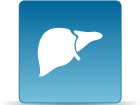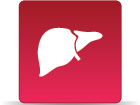Carbon tetrachloride
CASRN 56-23-5 | DTXSID8020250
- Toxicological Review (PDF) (473 pp, 3.04 M)
- IRIS Summary (PDF) (20 pp, 363 K)
Noncancer Assessment
Reference Dose for Oral Exposure (RfD) (PDF) (20 pp, 363 K)
Last Updated: 03/31/2010
| System | RfD (mg/kg-day) | Basis | PoD | Composite UF | Confidence |
|---|---|---|---|---|---|
| Hepatic | 4 x 10-3 | Elevated serum SDH activity |
BMD2x
(ADJ): 3.9 mg/kg-day |
1000 | Medium |
Reference Concentration for Inhalation Exposure (RfC) (PDF) (20 pp, 363 K)
Last Updated: 03/31/2010
| System | RfC (mg/m3) | Basis | PoD | Composite UF | Confidence |
|---|---|---|---|---|---|
| Hepatic | 1 x 10-1 | Fatty changes in the liver |
BMCL10
(HEC): 14.3 mg/m3 |
100 | Medium |
Cancer Assessment
Weight of Evidence for Cancer (PDF) (20 pp, 363 K)
Last Updated: 03/31/2010
| WOE Characterization | Framework for WOE Characterization |
|---|---|
| Likely to be carcinogenic to humans | Guidelines for Carcinogen Risk Assessment (U.S. EPA, 2005) |
- Under the Guidelines for Carcinogen Risk Assessment (U.S. EPA, 2005a), carbon tetrachloride is "likely to be carcinogenic to humans."
- This may be a synopsis of the full weight-of-evidence narrative.
Quantitative Estimate of Carcinogenic Risk from Oral Exposure (PDF) (20 pp, 363 K)
Oral Slope Factor:
7 x 10 -2 per mg/kg-day
Drinking Water Unit Risk:
2 x 10 -6 per µg/L
Extrapolation Method:
Multistage model with linear extrapolation from the POD (LED10).
Tumor site(s): Hepatic
Tumor type(s): Hepatocellular adenoma or carcinoma (Nagano et al., 2007b, JBRC, 1998)
Quantitative Estimate of Carcinogenic Risk from Inhalation Exposure (PDF) (20 pp, 363 K)
Inhalation Unit Risk:
6 x 10 -6 per µg/m3
Extrapolation Method:
Log-probit model with linear extrapolation from the POD (LEC10).
Tumor site(s): Endocrine
Tumor type(s): Pheochromocytoma (Nagano et al. 2007b, JBRC 1998)
- Human Health Benchmarks for Pesticides (HHBP). This database provides human health benchmarks for pesticides that may be present in drinking water.
- Office of Pesticide Programs Pesticide Chemical Search. This database provides links to health effects information and registration status for pesticides.
- Chemistry Dashboard. This database provides information on chemical structures, experimental and predicted physicochemical, and toxicity data.
Mar 2010: IRIS Toxicological Review of Carbon Tetrachloride (Final Report) (Report)
Nov 2009: IRIS Toxicological Review for Carbon Tetrachloride (Interagency Science Discussion Draft) (Report)
May 2008: IRIS Toxicological Review of Carbon Tetrachloride (External Review Draft) (Report)
Sep 1989: Health Effects Assessment for Carbon Tetrachloride (Updated 1989) (Report)
Sep 1986: Health Effects Assessment for Carbon Tetrachloride (1986) (Report)
Sep 1984: Health Assessment Document for Carbon Tetrachloride (Final Report, 1984) (Report)
Mar 1982: Health Assessment Document for Carbon Tetrachloride (External Review Draft,1982) (Report)
You will need Adobe Reader to view some of the files on this page. See EPA’s PDF page to learn more.




